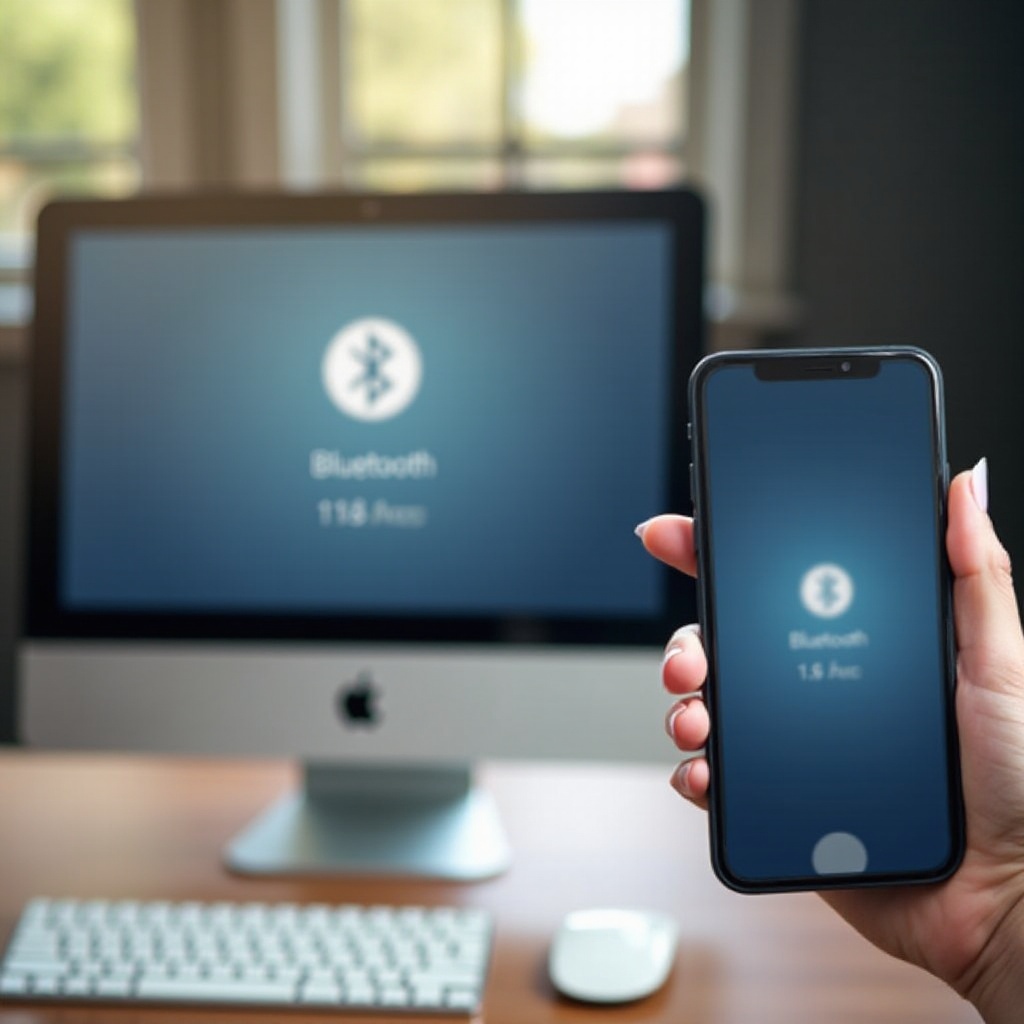How to Transfer Videos from Computer to Phone (2024 Guide)
Introduction
Transferring videos from your computer to your phone might seem like a daunting task if you’re unsure of the best method. Whether for work, study, or entertainment, having videos on your phone offers convenience and portability. This 2024 guide will walk you through various methods to transfer your videos easily and seamlessly, from using USB cables to cloud services and Wi-Fi transfer apps.

Preparing Your Devices
Before transferring your videos, it’s essential to prepare your devices. Ensure your computer and phone are fully charged or connected to a power source to avoid interruptions. Update the operating systems of both your devices for optimal compatibility and smooth data transfer. Also, ensure your smartphone has enough storage space to accommodate the video files you intend to transfer.
Using a USB Cable
Using a USB cable is one of the most direct ways to transfer videos from your computer to your phone. Let’s look at how this method works for Windows and Mac users.
Step-by-Step Guide for Windows
- Connect your phone to your PC using a USB cable.
- On your phone, select the ‘File Transfer’ mode.
- Open ‘File Explorer’ on your computer.
- Find your phone in the list of connected devices.
- Navigate to the folder where you want to copy the video on your phone.
- Drag and drop the video files from your PC to your phone’s folder.
Step-by-Step Guide for Mac
- Connect your phone to your Mac with a USB cable.
- Use ‘Android File Transfer’ if you’re using an Android phone.
- Open Finder and locate your phone in the sidebar if you’re using an iPhone.
- Navigate to the folder where you want to transfer the video.
- Drag and drop the video files into the designated folder.
Troubleshooting USB Connection Issues
If you encounter issues with your USB connection, consider the following steps:
- Ensure the cable is not damaged.
- Try using a different USB port.
- Update your USB drivers on your PC.
- Restart both your phone and computer if the connection doesn’t establish.
Via Cloud Services
Cloud services provide a flexible way of transferring videos without the need for a physical connection. This method also offers backup and easy access from anywhere. Let’s explore different cloud services:
Using Google Drive
- Upload the video files to your Google Drive account from your computer.
- Open the Google Drive app on your phone.
- Download the video files to your local storage.
Using iCloud
- Upload videos to iCloud Drive from your computer.
- Ensure your phone is signed in to the same iCloud account.
- Open the ‘Files’ app on your phone and download the videos from iCloud Drive.
Using Dropbox
- Upload the video files to your Dropbox from your computer.
- Open the Dropbox app on your phone.
- Navigate to the uploaded videos and download them to your device.

Wi-Fi Transfer Apps
If you prefer not to use cables or cloud services, Wi-Fi transfer apps are a great alternative, allowing you to transfer files wirelessly within the same network. Here are a couple of options:
Setting Up SHAREit
- Download and install SHAREit on both your computer and phone.
- Connect both devices to the same Wi-Fi network.
- Open SHAREit on your computer and select the video files.
- On your phone, select ‘Receive’ to get the transferred videos.
Using AirDroid
- Install AirDroid on both devices.
- Create an AirDroid account if needed and sign in on both devices.
- Use the ‘File Transfer’ feature on your computer to select and send videos.
- Open the AirDroid app on your phone to receive the files.
Security Considerations
- Ensure you are on a secure and private Wi-Fi network.
- Always use apps from trusted sources.
- Check the permissions requested by these apps and disable unnecessary ones.
Bluetooth Transfer
Bluetooth provides a simple method for transferring smaller video files, though it might be slower compared to other methods. Follow these steps for Bluetooth transfer:
Enabling Bluetooth
- Turn on Bluetooth on both your phone and computer.
- Make your phone discoverable from the Bluetooth settings.
Pairing Devices
- Search for your phone on your computer’s Bluetooth menu and initiate the pairing.
- Confirm the pairing request on your phone.
Transferring Videos
- Right-click on the video file on your computer, select ‘Send to,’ then choose your phone.
- Accept the transfer request on your phone.

Email and Messaging Apps
For smaller video files, using email or messaging apps can be an effective solution. Here’s how you can do it:
Sending Videos via Email
- Attach the video file to an email on your computer.
- Send the email to an account associated with your phone.
- Download the video attachment to your phone.
Using WhatsApp
- Open WhatsApp Web on your computer and scan the QR code with your phone.
- Send the video file to yourself or a contact.
- Download the video from the chat on your phone.
Using Telegram
- Open Telegram on both your computer and phone.
- Send the video file to your saved messages.
- Download the video from your saved messages on your phone.
Conclusion
Transferring videos from a computer to a phone doesn’t have to be complicated. By using USB cables, cloud services, Wi-Fi transfer apps, Bluetooth, or messaging apps, you can choose a method that best suits your needs. With the steps provided, you’ll be well-equipped to transfer your videos smoothly and quickly.
Frequently Asked Questions
Can I transfer large video files from computer to phone?
Yes, you can transfer large video files using USB cables, cloud services, or Wi-Fi transfer apps. Cloud services often handle large files better without size limitations imposed by email and messaging apps.
What is the fastest method to transfer videos from PC to phone?
Using a USB cable is generally the quickest method due to its direct connection and high transfer speed. However, depending on file size and convenience, cloud services can also be efficient.
How do I ensure the video quality is not compromised during transfer?
To maintain video quality, avoid compressing the files unnecessarily. Use reliable methods such as USB transfers or cloud services that do not compress video files. Ensure you’re using original files rather than compressed ones for the best quality.
